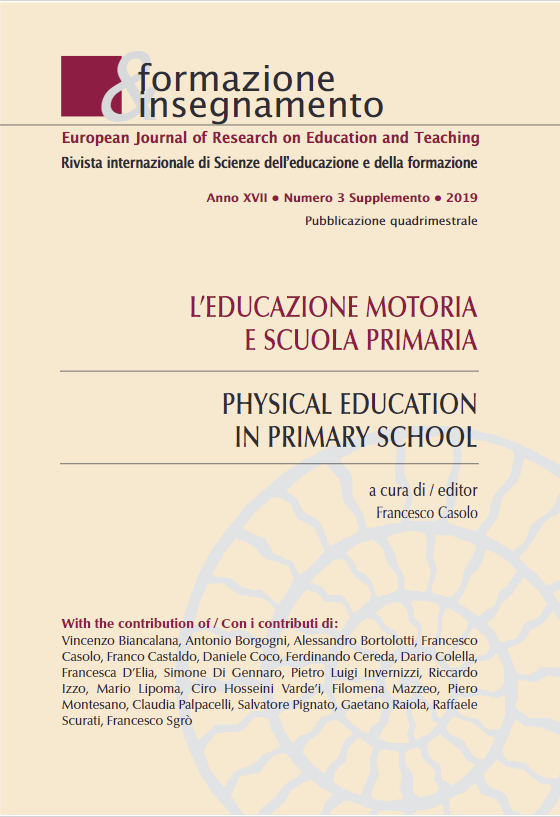Physical Education in Primary School: Which Teaching Competencies?
DOI:
https://doi.org/10.7346/-feis-XVII-03-19_04Abstract
There is a compelling evidence that supports the importance of promoting an adequate practice of physical activity in the developmental years, i.e. from 6 to 11 years of age, in the primary school context. The beneficial effects of children’s’ involvement in regular physical activity can be classified into three main areas: firstly, the prevention of some particularly recurrent pathological situations, secondly, the promotion of their physical fitness and well-being and lastly, the maturation of the cognitive system with its implications on the learning process and children’s self-control. In order to offer some support to physical education (PE) curricular programs and hours, many project have been implemented in schools of the most important and sensitive Italian regions for over 15 years to date. These projects have been mainly financed by local authorities (e.g. State, Regions, Municipalities), supported by the Italian National Olympic Committee (CONI) for the administrative aspects, coordinated and monitored by the single universities and implemented by the introduction of graduates in Motor and Sport Sciences in the school context with the aim of assisting and helping the general teachers to handle curricular PE hours. The positive outcomes of these implementations on children’s physical and mental well-being and psycho-social maturation have convinced the Ministry of Education, University and Research to propose a law to support and activate the introduction of the new professional figure of the Motor and Sport Science graduate in the primary school context. This study aims at opening the debate on the skills required by this new and specialized professional figure.
Downloads
Published
How to Cite
Issue
Section
License
Copyright (c) 2019 Pensa MultiMedia

This work is licensed under a Creative Commons Attribution 4.0 International License.
Formazione & insegnamento is distributed under Attribution 4.0 International (CC BY 4.0).
For further details, please refer to our Repository & Archiving Policy, as well as our Copyright & Licensing Terms.





